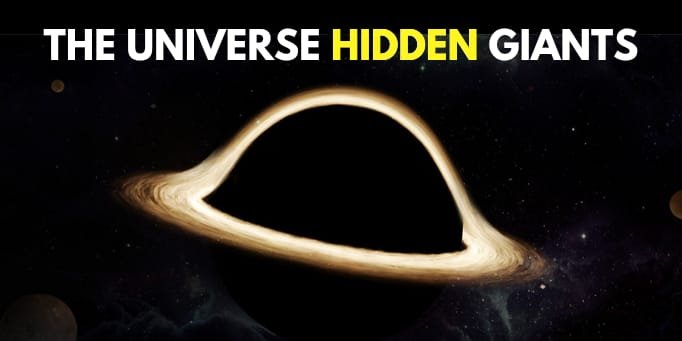Hello, Are you interested in knowing about history of black holes? Let’s discuss with it’s size first. They are millions to billions of times heavier than our Sun. Up to the time, how these huge bodies come together and what elements handle their interactions is a big puzzle.
But now, a creative discovery has peel new light on this puzzle. Scientists have exposed important details about how big black holes appear. This increases our knowledge of these gravitational giants. It also increases our grasp of the universe’s basic forces.
In this blog post, we’ll see what these huge black holes are and how do they unite. Hold on for a journey into the heart of the galaxy’s most strange settler!
What Are Supermassive Black Holes?

Supermassive black holes are perhaps one of the most enigmatic types of objects across the expanse of the universe. The following is an explanation of what they are in an in-depth view:
Definition
Supermassive black holes are extremely dense regions in body with such high pulls that not even light can escape from them. They are an order of magnitude larger than stellar black holes, which result from the cores of a dying giant star’s collapse.
Size and Scale
As the name suggests, supermassive black holes are super massive. They can be millions to billions of times more than our Sun. Now looking at this appreciably, if you were to somehow compact all these mass into one dot, it would be producing such a gravitational field that even space time would curve around it.
Locate
Supermassive black holes are usually located at the cores of the galaxies. These are critical in the formation and development of galaxies. For instance, our Milky Way Galaxy also has a supermassive black hole at the center, which is know as Sagittarius.
Emergence and Evolution
These supermassive black holes formation and growth remain areas of active research. Perhaps, they originated due to the collision and coalescence of several smaller black holes or as a result of great gas clouds contraction.
How Do Supermassive Black Holes Merge?

The coalescence of supermassive black holes is a spectacular and rather multifaceted phenomenon in that regard which can cause profound restructuring at galactic and even universal proportions. One might put it very loosely like this as to what the processes of their merging are:
The Initial Structure
Galactic Setup: Supermassive black holes are almost always situated in the core of galaxies. Therefore, it is understandable that upon the merger of two galaxies, the respective central black holes will eventually be close enough to interact.
By Orbiting: So as the development in question takes place, it is possible that the supermassive black holes of the colliding galaxies can come to orbit each other in a plane about the centre of mass of the two. This distance is one for which the gravitational pull on them from their centre is large and the black hole companions are widely separated.
Gravitational Encounters
Closer Approaching: In due course and due to the forces of gravity, the black holes become more and more internal and thus tend to merge. Black holes have masses that exert force that attracts them closer to each other lowering the distance observed between them.
Star Kinematics: Stars and clouds of dense gas and dust that orbit or surround the supermassive black holes are also bound by the potential fields of these massive objects. This process serves to enable those black holes to draw closer to one another as the energy is carried away from the orbital motions of the black holes.
Impact on Astronomy and Astrophysics
The recent findings related to the manner in which supermassive black holes coalesce and the management of dark matter reveal ecological significance in the areas of astronomy and astrophysics. Here’s a look at some of the implications that have been felt:
Advances in Black Hole Physics
Understanding Mergers: This makes for a clearer understanding of the processes of supermassive black hole interaction and merging which helps in shaping our existing theories of black hole formation and evolution and is more likely to yield the correct outcomes.
Gravitational Waves: This helps increase the knowledge of erstwhile gravitational waves that are created during the merger of black holes which are distortions of spacetime. This might enhance the performance of gravitational detector systems such as LIGO and Virgo in terms of better observations of cosmic phenomena.
A Bigger Picture of Dark Matter
Role in Mergers: The discovery adds towards the argument regarding dark matter by explaining how dark matter helps in the mergers of black holes. This clears some fog in the understanding of this invisible boundary and how it interacts with the regular matter.
Galaxy Formation: In a similar vein, knowledge on how dark matter affects black holes dynamics can help explain the processes involved in galaxy formation and evolution. It stresses on the role played by dark matter in determining the features and activities of the galaxies.
Effects On Observation Methods Enhancing Simulations
The results may bring about technological enhancement in the simulations that are related to cosmic events. More sophisticated theories on the mergers of black holes and dark matter collisions will enable better simulation and analytics of contextual data. Detection Methods: Once we understand more of gravitational waves and interactions of black holes with one another, we may be able to develop other observational styles as well andenhance our work.
Directions of Research in the Future Further Exploration
The finding facilitates further investigation into both supermassive black holes and dark matter. There will be better understanding of the phenomena such as the intricacies of black hole mergers and the phenomena of dark matter in a range of cosmic processes. Interdisciplinary Studies: The study of interaction between black holes and dark matter will warrant physicists, cosmologists as well as mathematicians which will enhance people to view the universe more than one discipline.
Social and Educational Influence Inspiration and Awareness
Such advances in research are often well received by society and makes the public aware on certain intricacies in the universe. These developments are capable of fostering the interest of the forthcoming high caliber world scientists as well as the growing people’s attention in relation to space and astrophysics. Educational Resources: The finding gives rich content for edibiohetipal learning.
Conclusion
The new comprehension of formation of large black holes and more specifically the dark matter’s contribution, adds to our progress as a society in the universe. This explains more such new discoveries not only increases out comprehension of these wondrous beings but also changes how we view the fundamental principles and constituents of the universe.
Thanks to this research, which illuminates the different phases of the merger of black holes including the role of dark matter, scientists have explained new phenomena concerning the developments of galaxies. The development enriches our understanding of the phenomena of gravitation with regard to the dark matter effect and the universe’s plasticity. Little by little, as we refine our models and improve our observational capabilities, we get closer to some of the most fascinating problems in astrophysics.
The creation of dark matter therefore further invites other studies. It allowed pursuing compelling new ways to examine the black holes as well as the dark remnants of galaxies, and perhaps finding out more on the universe itself: its dark secrets. For those who target effects for astronomical and physical, and diehards in this case these news provides even more appreciation for the little tricks around our universe yet showing how much more there is to achieve.
FAQ
1. What are supermassive black holes?
The umbilical cords that have been learnt by the course of this module are: superficially large black holes that can be found at the point of convergence of the galaxies more so the Milky Way Galaxy. Such black holes can be up to millions or billions times the mass of the sun and have gravitational forces which are enormous even for the wavelengths of light.
2. How do supermassive black holes merge?
As galaxies collide, supermassive black holes coalesce as a result of the relative motion within the pair of black holes that is induced by merging galaxies. They wind in due to gravitational effects and energy loss. At last, they crash and unify into a bigger black hole thrusting superfluous energy in the form of gravitational waves.
3. What is dark matter?
Dark matter is a form of matter that is undetectable since such types of matter do not produce, take in, or reflect light. This accounts for about a quarter or 27 percent of the mass and energy within the universe and can only be investigated through the forces that it exerts on other mass structures.
4. How does dark matter influence black hole mergers?
Dark matter shapes how black hole mergers take place by changing the evolution of the gravitational field of the galaxy. It may assist in determining the ways in which black holes travel and interact, and how they eventually come together and merge may be changed by its presence.
5. How does this finding inspire further examination?
This discovery highlights the difficulty and wonder of the universe, inspiring both scientists and the public to remain exploring cosmic phenomena. It highlights the importance of constant research and the quest for profounder understanding in the ever-expanding field of astrophysics.





